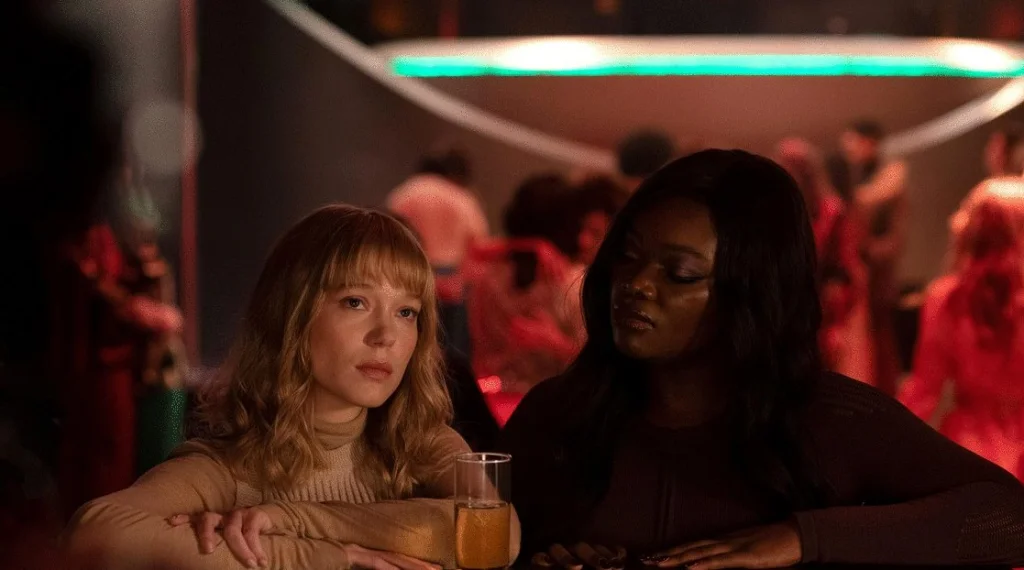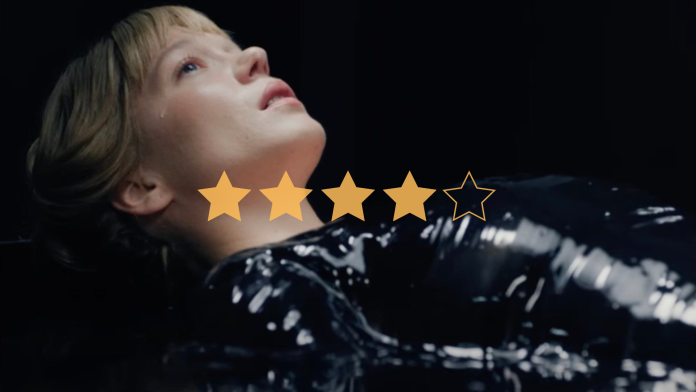Bertrand Bonello’s The Beast is a glorious and twisted century-spanning romance that is a playful, absurd, and utterly terrifying indictment on historical and modern societal issues.
★★★★✰
Calling The Beast a romance is not only reductive of Bertrand Bonello’s fascinating, genre-hopping film, but it is also only part of the truth. The first time period of the film, 1910, is the most traditional romance, with the abusive incel of 2014’s era sitting in stark contrast; The Beast’s third period, set in 2044, is perhaps the least definable. It might be more accurate to refer to The Beast as a science-fiction-romantic-period-futuristic-drama that leans into melodrama and horror—but even that doesn’t paint the full picture.
The Beast begins in the future. In a sterile dystopian 2044, human emotions have been deemed negative, our tendencies to be guided by the heart as opposed to detached logic making our species useless. Many have undergone a procedure to purify themselves, entering their past lives—by being submerged in a bath of black, sticky liquid—in the hope of ridding themselves of strong emotions in the present. Gabrielle (Léa Seydoux) tries this process; we are with her throughout The Beast’s three timelines, in each of which she meets a variation of Louis (George MacKay). The issue for Gabrielle, however, is that the procedure doesn’t seem to be working.
Based on Henry James’ novella The Beast in the Jungle, in which the main character believes a beast of some kind lies in wait for him somewhere, Bonello’s adaptation elevates the source material to new levels. With a near 145-minute runtime, The Beast is undoubtedly epic in its timelines and themes, but there is real cohesion and consistency throughout. Bonello picks up themes of existential dread and loneliness seen in James’ novella and inserts them into a swirling, heady mix of the past, present, and future, which causes The Beast to feel both deeply classical and strikingly modern. Stories are built within stories, as the flowing river of memories and past lives take us on increasingly frightening paths.

Brilliant costume design by Pauline Jacquard and production design by Katie Wyszkop work wonders in clarifying these time jumps for the viewer. 1910 is as lush a period piece as you’ll see all year, whilst 2044 is sickening in how bleak and sanitised our world would be without emotions. And at the centre of The Beast are Seydoux and MacKay, who operate with stunning chemistry in each period of the film, and also display notable character differences between each timeline. MacKay in particular is given the most scope; he is as swooningly charming in 1910 as he is repulsively dangerous in 2014. Meanwhile, Seydoux brings the emotional torment that is key to The Beast.
Bonello’s film offers no easy answers, but posits a staggering selection of complex questions. He is as comfortable working in psychological horror as he is in classical romance, and always shows a keen, meta eye for proceedings. The Beast might span multiple timelines, but the themes are all interlinked, showing their universality. We see the positive impact of love alongside the unhealthy negatives, and how quickly it can morph into obsession. The result is not only wholly fascinating, but hugely thought-provoking.
The Verdict
The Beast is a triumphant, challenging film that hops cleanly across interconnected timelines and genres. Stunning performances from Seydoux and MacKay drive the film’s fascinating melodrama into unexpected territories.
Words by William Stottor
The Beast is in cinemas from 31st May
Support The Indiependent
We’re trying to raise £200 a month to help cover our operational costs. This includes our ‘Writer of the Month’ awards, where we recognise the amazing work produced by our contributor team. If you’ve enjoyed reading our site, we’d really appreciate it if you could donate to The Indiependent. Whether you can give £1 or £10, you’d be making a huge difference to our small team.
